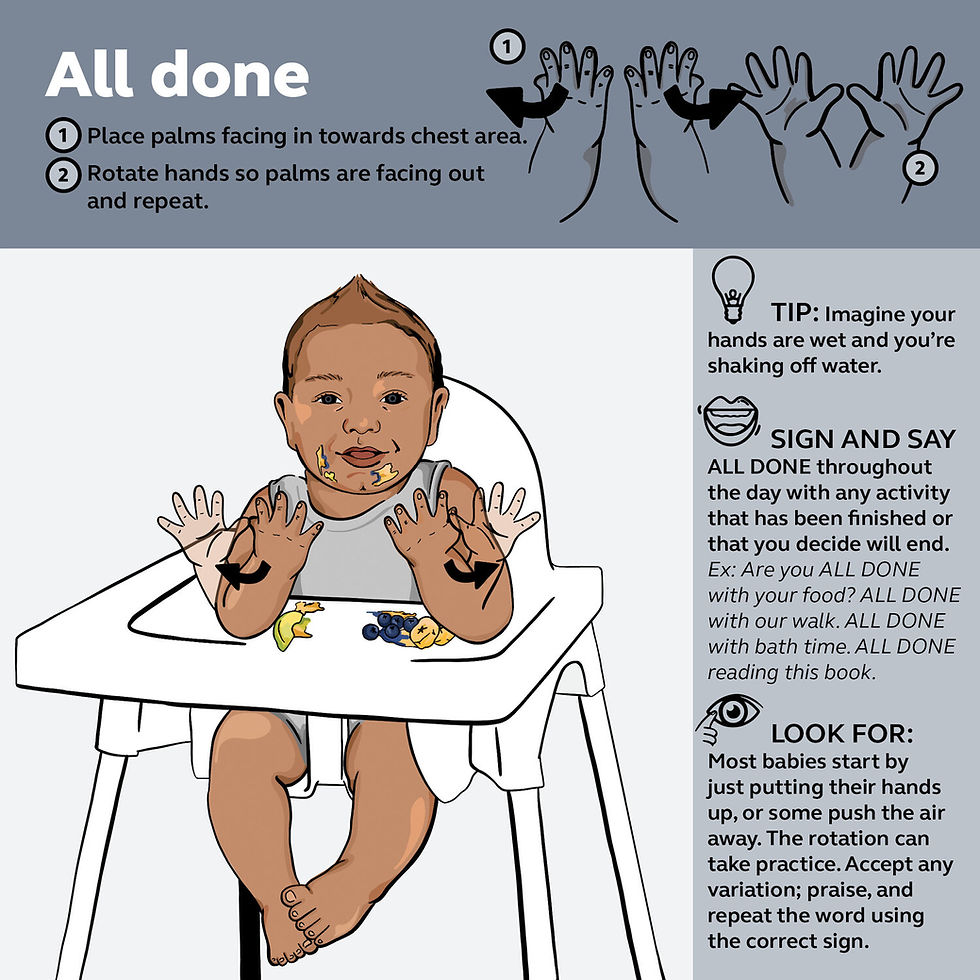Exploring the Fascinating World of Baby Sign Language Communication
- Katie Thompson
- Jan 21, 2024
- 2 min read
At Clark Academy, we recognize that babies and young children are still developing their verbal skills. Sign language is an excellent tool that allows them to communicate and express themselves, even before they can speak. We integrate sign language into our daily activities to help children develop their language and communication skills while having fun.
Our teachers use songs, games, and other interactive activities to teach sign language to babies and children. We teach them simple signs for everyday words and phrases, such as "milk," "more," and "all done." We also use sign language to teach children about emotions, which helps them develop empathy and social skills.
We believe that sign language is an essential tool for communication and that it should be accessible to everyone. By integrating sign language into our daily activities, we help children develop their language skills, express themselves, and build strong relationships with others.

Here are some of the benefits of using Sign language with babies and children of all ages.
One of the most significant benefits of using sign language with babies is that it can aid in their communication development. As babies develop their motor skills far earlier than they can speak, using sign language can help them to express their needs and wants more effectively.
Sign language can also help to reduce frustration and tantrums in babies and young children as they are able to communicate their needs more clearly.
Another benefit of using sign language with children is that it can improve their language and literacy skills. By introducing sign language early on, children are exposed to a visual and tactile language that can enhance their understanding of words and concepts.
Studies have also shown that children who use sign language tend to have larger vocabularies and are better at reading and spelling.
In addition, using sign language can promote bonding and closeness between caregivers and children. It can be a fun and interactive way to communicate, and it can also help to build trust and understanding between the child and caregiver.

We understand that it can be tough to comprehend what your little one is trying to communicate, especially when they're just starting out. That's why we strongly suggest keeping up with our monthly newsletters to provide you with a sneak peek into the signs your child will be working on. By learning these signs, you'll be able to understand what your child is trying to say and respond appropriately.

.png)
Comments